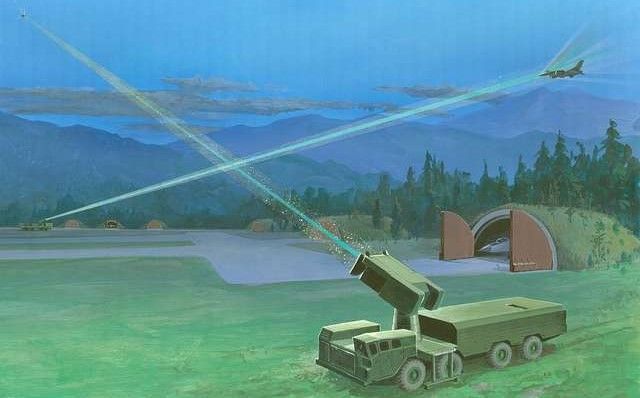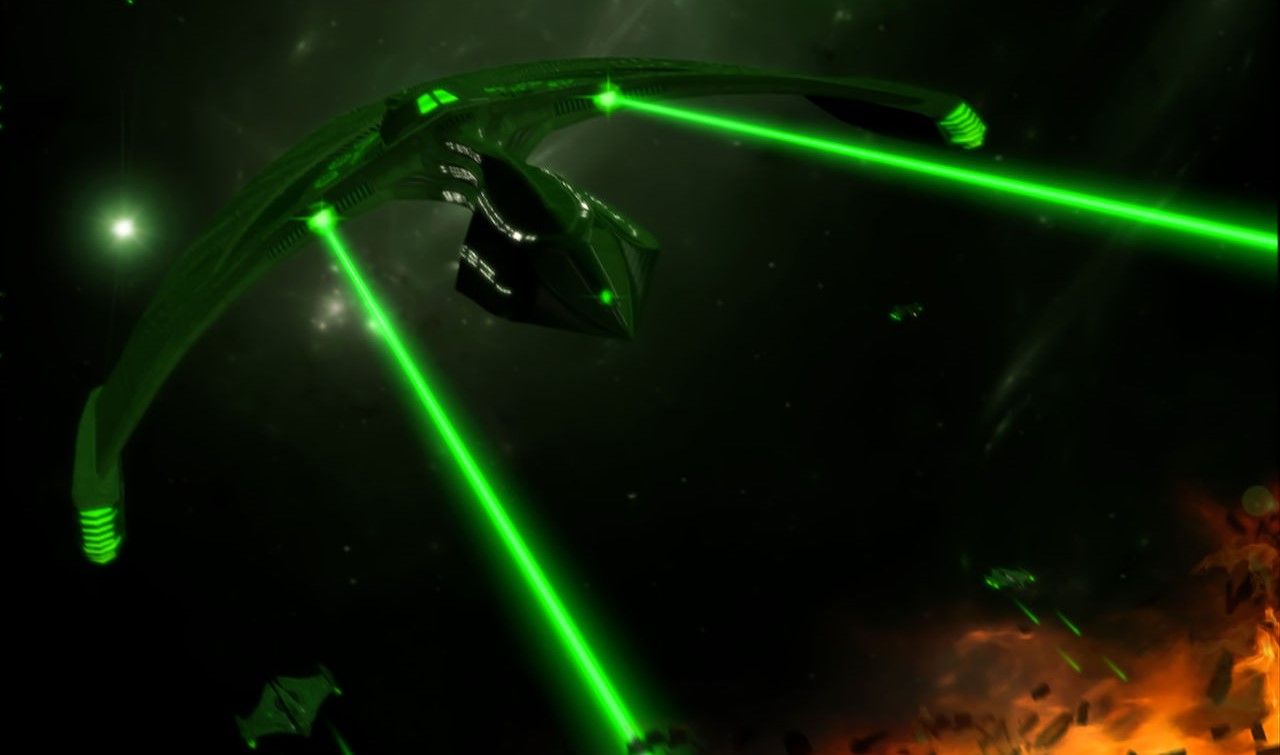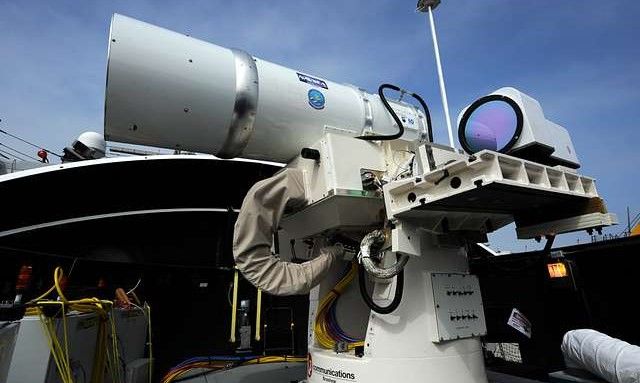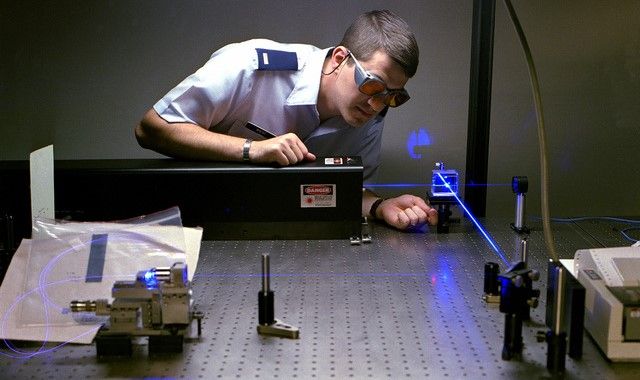The 101 on Laser Weaponry
More than science fiction, laser weapons are proving to be a highly accurate, low cost, and deadly way to wage war.

Nothing is more space-age than the laser gunfights of Star Wars and Star Trek. But this part of science fiction is now a reality as British, American, and other advanced military powers have run successful experiments of laser beams that are able to hit and damage test targets.
But how exactly do laser beams work and where will they first be deployed?
Since the first laser was created in 1960, physicists have created a wide range of lasers that produce photons at various electromagnetic spectrum wavelengths, ranging from ultraviolet to infrared. Weapons researchers have concentrated their efforts on high-energy beams created by solid-state laser systems which can transform the applied electrical energy into photons using crystals. These high-power solid-state lasers are notable for their ability to produce photons that are invisible to the human eye since they originate in the infrared region of the electromagnetic spectrum.

But when directed in the right way with the correct power, laser beams become a fighting force to be reckoned with. As the military journal C4isrNet explains, “When it interacts with a surface, a laser beam generates different effects based on its photon wavelength, the power in the beam and the material of the surface. Low-power lasers that generate photons in the visible part of the spectrum are useful as light sources for pointers and light shows at public events. These beams are of such low power that they simply reflect off a surface without damaging it.” However, the report notes, “Higher-power laser systems are used to cut through biological tissue in medical procedures. The highest-power lasers can heat, vaporize, melt and burn through many different materials and are used in industrial processes for welding and cutting.”
Given that laser beams are now a proven and practical possibility, military commanders have asked for their power to be converted into weaponry for three clear reasons.
1. Endless Ammo - Laser weapons are often thought to have endless ammo because they use energy from a power source, such as a battery or generator, to produce the beam. As long as the power source is available, the weapon can continue firing without the need for physical ammunition like bullets or missiles. This gives the perception of limitless ammunition because the power source can be replenished or recharged, allowing the weapon to keep firing for extended periods of time. This is in stark contrast to conventional weapons, particularly those with complex supply chains being fired far from base camps or home countries.
2. Accuracy - Laser beams are more accurate than conventional ammunition because they travel in a straight line and are not affected by factors like wind or gravity. This allows them to hit their target with exceptional precision.
Additionally, by travelling at the speed of light, laser beams can reach their targets almost instantaneously, giving the enemy no practical time to react or defend themselves. This instantaneous shooting can give military forces a significant advantage in combat situations, allowing them to strike quickly and decisively.
3. Low-cost – By eliminating the need to manufacture and transport conventional ammunition, laser weapons are significantly cheaper per-shot than the cost of firing a missile, rocket, or similarly powered munition.
As a CNN report explains, “The [UK] Defense Ministry put the price of firing a 10-second laser burst at around $13. In contrast, the Standard Missile-2 used by the United States Navy for air defense costs more than $2 million per shot.”
However, laser weapons also have several downsides, namely:
1) They can only fire in a straight line (no shooting at an enemy behind a hill or building).
2) Early designs have struggled for accuracy in misty or humid conditions.
3) There are fears over the control of their range. If you shoot down an enemy plane, is it possible for the laser to continue its path and shoot down a friendly satellite? Not yet, due to limited power/range, but is this where the technology is heading?

A further significant obstacle faced in employing high-energy lasers is the substantial power required to produce meaningful effects from a distance. In contrast to an industrial laser, which might be only a few inches away from its target, military operations require much longer ranges. For this reason, next-generation warships are being built with larger electrical output capabilities in readiness for the power needed to fire lasers when the armaments become available.
The smallest laser weapon made to date, consume 10 kW of electricity, which is about the same as an electric vehicle. The most recent high-power laser weapon under development requires 300 kW of power, which is sufficient to run thirty households. Furthermore, energy efficiency of lasers is only about 50%, with a significant quantity wasted as heat which needs to be managed, by shielding or cooling in some way.

With their impeccable precision and accuracy, it is hoped that their use will reduce the risk to civilians as well as reduce the dangers posed by unexploded ordinance from conventional weapons.
However, there are also concerns about the proliferation of laser weapons and the potential for misuse or escalation of conflicts. As more countries develop and deploy these weapons, there is a risk that they could be used in ways that violate international laws and norms. As such, it will be important for the international community to establish clear guidelines and regulations for the use of laser weapons to prevent their misuse and ensure that they are used responsibly.
If these downsides can be avoided, then the development and deployment of laser weapons represent a significant advancement in military technology that has the potential to change the landscape of conflict in the future.
Photo credit: Picryl, Jenikirbyhistory, Picryl, & Deviantart

